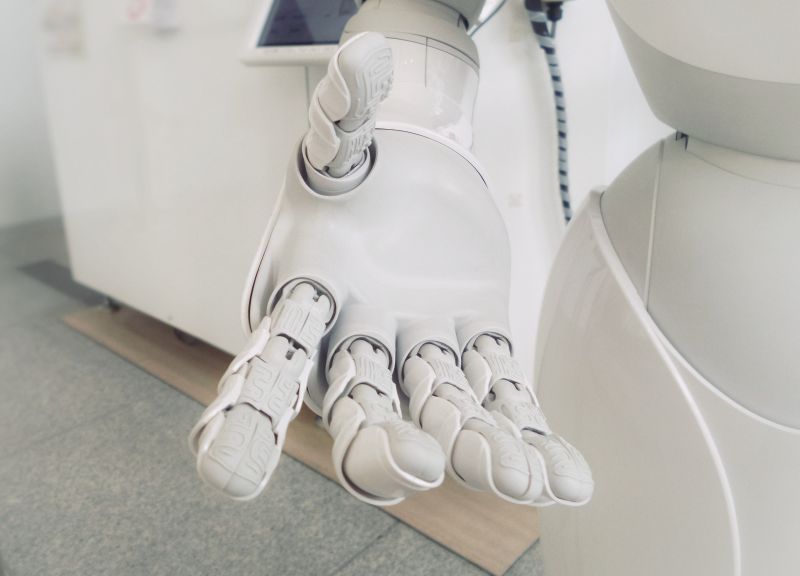Hardly a day goes by when there isn’t some story in the news about artificial intelligence (AI). We are bombarded by the media with topics both inspiring and terrifying. This is particularly true in healthcare. We read how artificial intelligence will drastically change the practice of medicine, nursing, our entire healthcare infrastructure, etc. The word “AI” has now become a buzzword—an overused and perhaps inappropriately cited cliché in our business. But there is no doubt that this technology will radically change how we do things in the future. But what is AI, particularly in the context of healthcare?
Over the next several weeks, I will be writing blogs to address the impact of artificial intelligence in healthcare more specifically. As we dive deeper into the field of AI, however, we first must come to grips and hopefully achieve a workable consensus with some fundamental concepts: What do we mean by artificial intelligence in the first place, and how do we conceptualize and define it? Is AI an entity, and if so, does somebody own it and have accountability for it? Can AI develop a life of its own? Is this technology a blessing or a curse? Can it save mankind or destroy mankind? And the list goes on.
What Is Artificial Intelligence?
Prior to addressing any of those questions, we must first develop a practical working definition of artificial intelligence. As you will see, this is no simple matter.
Webster’s dictionary defines artificial intelligence as follows:
- A branch of computer science dealing with the simulation of intelligent behavior in computers, and
- The capability of a machine to imitate intelligent human behavior.
Seems straightforward. Therefore, in its most basic form, artificial intelligence is the process of programming a computer with a set of problem-solving algorithms and supplying it with a database upon which to apply these algorithms, both of which are done through the supervision of a human being. The computer then provides an output or result, in this case, a solution to the problem by simulating human intelligence.
Once again, it appears quite simple and predictable: There is an input in the form of a database, there are rules of engagement in the form of algorithms, and there is an output that imitates human intelligence to offer a solution to the problem, and all aspects of this process are supervised by humans.
If that truly is the definition of the process, we should have little to worry about. What can go wrong if the AI is limited to a particular set of “rules”, and the computer simply applies these “rules” to a given, ostensibly finite, set of data points, all of which are controlled by humans? If anything, this should be a boon to humans because the computer has incredible speed, will apply the algorithms with complete accuracy, and can perform those duties 24 hours a day, seven days a week without stopping- all to serve mankind.
Complications of AI in the Real World
As we learn more about the actual application of AI in the real world, however, two phenomena have been observed in the actual application of the AI process that are particularly concerning.
First, even though specific “rules” may be initially programmed into the computer, through a process called emergent properties, the computer may randomly start to deviate from these initial “rules” and develop events or conclusions that are entirely unexpected and unpredictable. By deviating from the initial programmed constraints, the computer could develop a “mind of its own” which the original human programmers cannot predict or control.
The ability to develop emergent properties allows the “machine” to modify the human controls and supervision. This introduces a scary randomness or uncertainty into what previously was considered a defined and confined process of human-machine engagement.
Additionally, through a process known as hallucinations or confabulation, AI can randomly give a confident response that is nonsensical or not justified by its training data or source content, in other words, it can simply lie and make a false statement on a random and unpredictable basis. Put another way, the computer can occasionally make things up.
Therefore, as a practical matter, I believe we must expand our initial definition of AI to include these two well-described phenomena. This makes the potential impact of AI much more precarious and frankly scarier.
What Is AI in Healthcare?
Considering all of the above, let me submit the following working definition of artificial intelligence. I will use this understanding of AI in subsequent discussions regarding the impact of AI in healthcare:
Artificial intelligence is the process whereby humans program a computer with multiple algorithms which the computer will apply to a predefined set of data points to provide a solution that simulates human intelligence…. BUT, on a random basis, uncontrollable by humans, it may change the rules of engagement, and on occasion, even confabulate and lie to you about the results. And it will do so extremely rapidly, extremely confidently, and extremely efficiently!
We now have a practical working definition of the process of artificial intelligence. We must understand and concede that even though the rules of engagement may be initially set by human programmers, the end result may on occasion be compromised by randomly unexpected and even false conclusions.
Artificial intelligence continues to advance using Moore’s Law of doubling every 12 to 18 months in capacity and ability. What we have today will pale in comparison to what we will see in the coming years. It is clear that:
AI has the capacity to not only exceed human intelligence and human processing, but also exceed human control and accountability.
Thus, we can see how AI can be simultaneously a blessing and a curse. It could deliver incredible value or create unforeseen and unpredictable disasters. There are two polar opposite answers to each of the questions listed above.
This is the first of a series of blogs on artificial intelligence. Each of these blogs is drawn from my presentation on AI in Healthcare, which you can learn about here. I look forward to further communication on this topic and welcome your input and thoughts. We are truly learning together.




